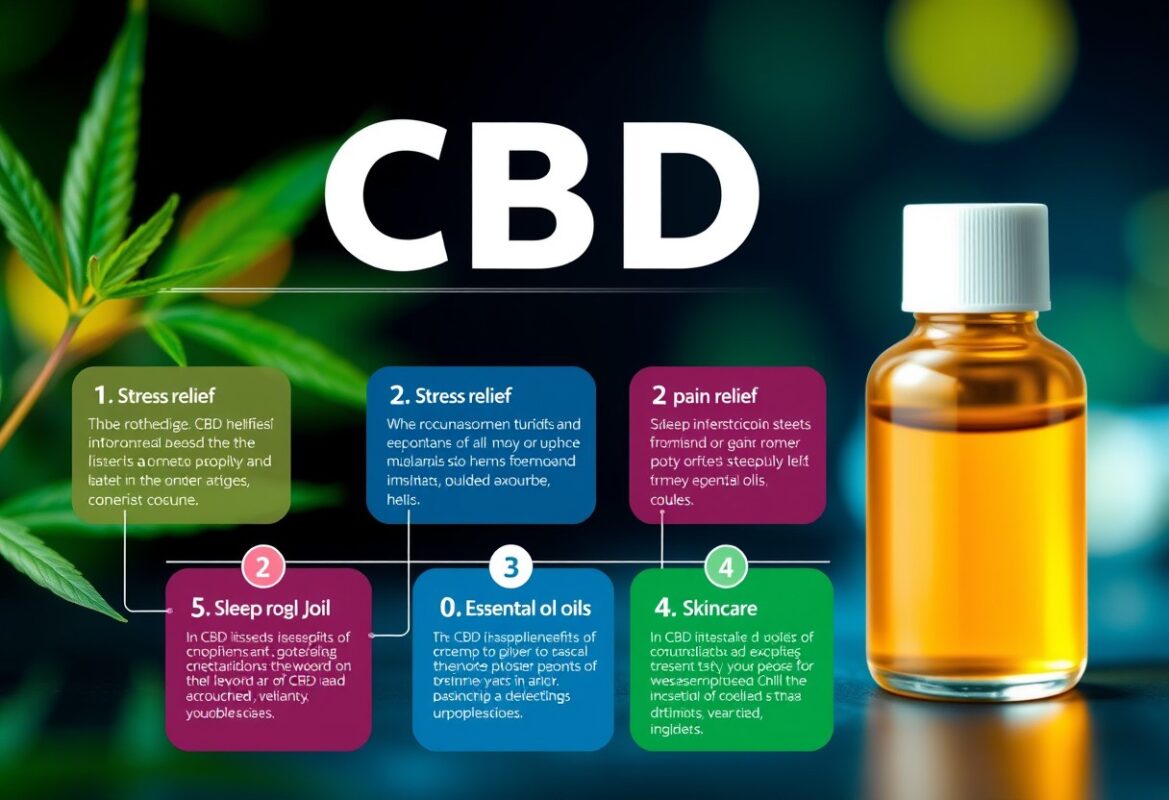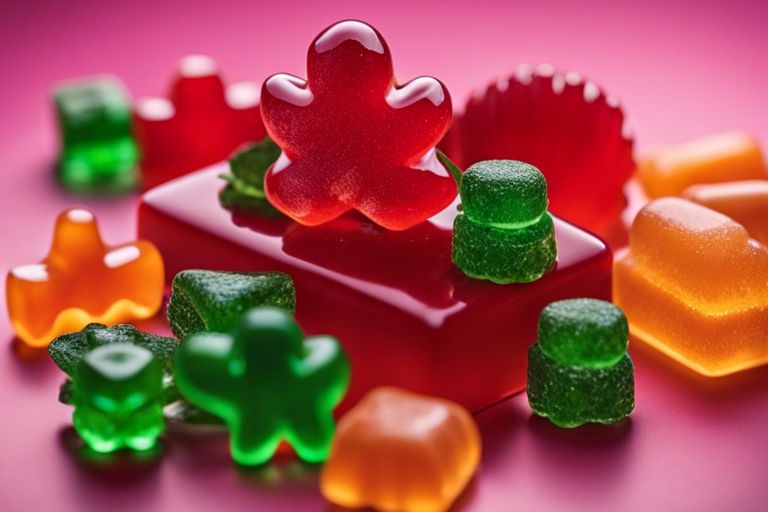The Benefits And Uses Of Cannabigerol (CBG) Explained

Over the past few years, you may have heard buzzing conversations about a lesser-known cannabinoid called Cannabigerol (CBG). Unlike its more famous counterpart, CBD, CBG is gaining attention for its unique therapeutic potential and various health benefits. In this post, we will explore what CBG is, how it interacts with your body, and why you might want to incorporate it into your wellness routine. Get ready to discover the remarkable ways this cannabinoid can enhance your life!
Key Takeaways:
- Health Benefits: CBG (Cannabigerol) is known for its potential therapeutic effects, including anti-inflammatory and neuroprotective properties, which may help with various health conditions.
- Non-Psychoactive: Unlike THC, CBG is non-psychoactive, meaning it does not produce a “high,” making it a suitable option for those seeking relief without mind-altering effects.
- Versatile Uses: CBG is being explored for its varied applications in products, including oils, edibles, and topicals, catering to the growing interest in cannabinoid-based therapies.
1. CBG is a non-psychoactive cannabinoid from cannabis plants.
2. Potential anti-inflammatory properties may aid in pain relief.
3. CBG shows promise for neuroprotective effects and brain health.
4. It may stimulate appetite and help with eating disorders.
5. Available in oils, tinctures, and various product forms.
6. Research is ongoing; benefits need further scientific validation.

What is CBG?
For those venturing into the world of cannabinoids and their various applications, CBG, or cannabigerol, is a fascinating compound that often flies under the radar compared to its more popular relatives like CBD and THC. CBG is known as the “mother of all cannabinoids,” as it acts as a precursor to other cannabinoids during the plant’s growth cycle. This attribute makes it necessary in understanding the broader spectrum of cannabis compounds and their effects. While CBG is typically found in smaller quantities in mature cannabis plants, ongoing breeding and cultivation endeavors are enhancing its availability, offering a wealth of untapped potential.
Definition and Origins
On a biochemical level, CBG emerges from the cannabis plant through the enzymatic action on cannabigerolic acid (CBGA), the acidic precursor from which it is derived. As the plant matures, CBGA converts into THCA, CBDA, and other cannabinoids, effectively leaving a smaller portion of CBG available at harvest time. This unique growth habit is why CBG is often less prevalent than its counterparts, yet its important roles in the cannabis ecosystem cannot be overstated. Researchers have begun to focus more on CBG for its potential therapeutic benefits, which range from anti-inflammatory properties to neuroprotective effects.
Chemical Structure and Properties
To dive deeper into the scientific complexity of CBG vs cbd, it’s necessary to examine its chemical structure. CBG has a molecular formula of C21H32O2 and features a similar structure to other cannabinoids, characterized by a cyclohexene ring, a chain of carbon atoms, and various functional groups that contribute to its distinctive properties. The way CBG interacts with the body’s endocannabinoid system, specifically through cannabinoid receptors, highlights its potential in modulating physiological processes.
It’s worth noting that CBG exhibits unique properties distinct from CBD and THC, primarily due to its non-psychoactive nature, allowing you to experience its benefits without the “high” commonly associated with THC. This makes CBG an attractive option if you’re looking for therapeutic effects without impairing your daily activities. Additionally, preliminary studies suggest that CBG may play a role in reducing intraocular pressure in glaucoma patients, combating certain bacterial infections, and even stimulating appetite—ultimately shaping a new perspective on how cannabis compounds can contribute to wellness.
Benefits of CBG
While cannabinoid research often focuses on THC and CBD, Cannabigerol (CBG) is emerging as a powerful player in therapeutic benefits. This lesser-known compound is quickly gaining attention for its potential benefits, which extend beyond mere relaxation. As you examine into CBG’s advantages, it’s clear that this cannabinoid can offer significant benefits for various health conditions. From anti-inflammatory effects to its use in skincare, understanding CBG can open new avenues for wellness.
Anti-Inflammatory Effects
For those seeking natural remedies, CBG’s anti-inflammatory properties may be a key interest. CBG works by interacting with the body’s endocannabinoid system and certain receptors linked to inflammation. This interaction can reduce inflammation markers, which may play a crucial role in various conditions such as arthritis, inflammatory bowel diseases, and other chronic inflammatory disorders.
Research indicates that CBG can provide substantial relief by modulating the immune response and inhibiting inflammatory processes. As you consider incorporating CBG into your regimen, its potential to reduce inflammation could contribute positively to your overall health and well-being.
Pain Relief and Management
On the topic of pain relief, CBG demonstrates notable potential. Many users report that CBG vs CBD could effectively assist in managing chronic pain, thanks to its unique ability to interact with pain receptors in the body. This cannabinoid might help you find relief from conditions such as fibromyalgia or neuropathic pain, where conventional medications often fall short.
This ability to target pain receptors means that CBG may reduce pain perception at its source. As you explore pain management options, CBG’s potential to offer natural relief could play an important role in improving your quality of life without the side effects commonly associated with traditional pain medications.
Antibacterial Properties
Relief from bacterial infections could also be an exciting avenue for CBG. Some studies suggest that CBG possesses antibacterial properties that may be effective against a range of pathogens. With the rise of antibiotic-resistant bacteria, natural solutions like CBG can offer hope in combating infections without contributing to resistance.
A deeper examine CBG’s antibacterial effects shows its potential as a powerful ally in both treating and preventing infections. You may find it beneficial not only for health purposes but also as a preventative measure in your wellness toolkit.
Skin and Hair Care
Properties of CBG extend to skin and hair care, where it has been found to promote healthier skin and hair. Furthermore, CBG’s moisturizing and nourishing qualities can benefit those with sensitive skin conditions, such as eczema or psoriasis, making it a potential treatment option.
Anti-inflammatory and antibacterial attributes also contribute to CBG’s effectiveness in skincare. As you consider natural remedies for your skin and hair, CBG could be a valuable addition, providing not just hydration but also protection against irritants and infections.
Therapeutic Uses of CBG
Despite the growing interest in cannabis compounds, many people are still unfamiliar with Cannabigerol (CBG) and its potential therapeutic benefits. Recent research has investigated into the effectiveness of CBG, particularly in the realms of anxiety, inflammation, and cancer treatment. If you’re interested in a comprehensive exploration of CBG, consider reading In Vitro and Clinical Evaluation of Cannabigerol (CBG) … for a deeper understanding of the subject.
Anxiety and Stress Relief
Therapeutic applications of CBG extend to anxiety and stress relief. As you may know, anxiety disorders affect millions of individuals worldwide, leading many to seek natural remedies to manage their symptoms. CBG has shown promise as an anxiolytic agent, which means it could help alleviate feelings of anxiety and promote relaxation.
Research indicates that CBG may impact certain brain receptors that regulate mood and stress responses. By modulating these pathways, you may find CBG to be a valuable addition to your wellness routine, reducing your reliance on conventional medications that can carry unwanted side effects.
Sleep Disorders and Insomnia
Uses of CBG for sleep disorders and insomnia are becoming increasingly recognized. Many individuals struggle to achieve a good night’s sleep, often turning to over-the-counter sleep aids that can be habit-forming or ineffective. CBG, on the other hand, may offer a natural alternative, promoting more restful sleep without the risk of dependence.
For instance, studies suggest that CBG may influence your body’s endocannabinoid system, helping to regulate sleep cycles. By addressing factors such as anxiety and discomfort that can disrupt sleep, CBG could help you attain the restorative sleep your body needs for optimal functioning.
Inflammatory Bowel Disease (IBD)
Uses of CBG extend to inflammatory bowel disease (IBD), which includes conditions like Crohn’s disease and ulcerative colitis. Both of these diseases involve chronic inflammation of the gastrointestinal tract, which can lead to severe discomfort and disruption of your daily life. Emerging evidence suggests that CBG may help reduce inflammation in the gut, potentially providing relief to those who suffer from these debilitating conditions.
It has been observed that CBG’s anti-inflammatory properties could play a crucial role in managing IBD symptoms, potentially alleviating your discomfort and improving your overall quality of life. If you are looking for alternative approaches to support your gut health, CBG may be worth considering.
Cancer Treatment and Prevention
An area that is gaining attention is the potential role of CBG in cancer treatment and prevention. Some studies indicate that CBG may possess antitumor properties, particularly against certain types of cancer cells. You should definitely be cautious, as cancer is a complex disease, but the prospect of using CBG as part of a holistic approach to wellness is intriguing.
Relief may come in the form of reduced tumor growth and improved appetite in those undergoing cancer treatment. Though more robust clinical trials are needed to fully understand its effects, the early findings are promising and suggest that CBG can have a significant positive impact on how you navigate the challenges of cancer.
How CBG Works
All you need to know about Cannabigerol (CBG) lies within its intricate interactions in the body. This cannabinoid stands out not only for its potential benefits but also for how it engages with our physiological systems. By understanding how CBG works, you can appreciate its unique properties and consider how it may influence your health and wellness pursuits.
Interaction with the Endocannabinoid System
Interaction with your Endocannabinoid System (ECS) is fundamental in understanding how CBG operates. The ECS plays a critical role in maintaining balance within the body, regulating mood, appetite, sleep, and immune responses. CBG acts as a non-psychoactive compound, meaning it won’t cause the “high” typically associated with cannabinoids like THC. Instead, it modulates your ECS, potentially enhancing its effectiveness and promoting homeostasis.
This modulation occurs through CBG’s interaction with cannabinoid receptors found throughout your body. By influencing these receptors, CBG can help address various ailments, offering a pathway to recovery and well-being and serving as a promising candidate for therapeutic applications.
Binding to Receptors
Interaction between CBG and your cannabinoid receptors is vital to its function. CBG primarily binds to the CB1 and CB2 receptors in the ECS. The CB1 receptors are predominantly located in the brain and are responsible for mediating psychoactive effects, while CB2 receptors are found throughout the immune system. CBG’s affinity for these receptors allows it to influence pain, inflammation, and other physiological processes, making it an attractive option for those seeking relief.
A unique aspect of CBG is its ability to act as a receptor antagonist; this means it can block or inhibit the action of other cannabinoids. This property may allow CBG to modulate the effects of THC and other cannabinoids, providing a balancing effect that enhances overall function within your ECS.
Synergistic Effects with Other Cannabinoids
Interaction with other cannabinoids is where CBG truly shines. Research indicates that when combined with other cannabinoids—such as CBD or THC—CBG may create a synergistic effect, enhancing the therapeutic potential of each compound involved. This is often referred to as the “entourage effect,” where the medicinal properties of the entire plant exceed those of individual cannabinoids.
Receptors become increasingly important in this context, as CBG can amplify the benefits of your cannabinoid regimen. By working in conjunction with other cannabinoids, CBG may help improve your overall experience, reduce potential side effects, and provide a more rounded approach to addressing specific health concerns.
CBG vs. CBD and THC
To truly appreciate the role of Cannabigerol (CBG) within the world of cannabis, you need to understand how it stacks up against its more famous counterparts, cannabidiol (CBD) and tetrahydrocannabinol (THC). While all three are cannabinoids derived from the cannabis plant, their interactions with your body can differ significantly. Both THC and CBD have garnered considerable attention for their therapeutic benefits, yet they operate through different pathways in the endocannabinoid system. This leads to unique effects for each, and understanding these distinctions can help you choose the right cannabinoid for your needs.
Similarities and Differences
An vital similarity between CBG, CBD, and THC is that they all originate from cannabinoids and interact with your body’s endocannabinoid system. They are most commonly extracted from the cannabis plant and can be harnessed to provide various health benefits. However, the critical difference lies in their compound structures and how they affect you. For example, THC is well-known for its psychoactive properties, which can create a sensation of being “high.” In contrast, CBD is non-psychoactive, meaning it won’t alter your mental state. CBG, on the other hand, is often described as non-psychoactive as well but can offer unique effects that differ from both THC and CBD.
Unique Properties and Advantages
Properties of CBG set it apart from CBD and THC in numerous ways. Research has indicated that CBG may have the potential to reduce inflammation, alleviate pain, and act as an antibacterial agent. These characteristics are significant, especially for individuals seeking natural alternatives for managing their health. Many users find CBG particularly appealing as it seems to offer a well-rounded profile of benefits without the intoxicating effects that THC can impart. Furthermore, new studies suggest that CBG may be beneficial in supporting mental clarity and focus, making it a desirable option for some users looking to harness the potential benefits of cannabis without the “high.”
It is also worth noting that CBG may enhance the overall efficacy of other cannabinoids through a phenomenon known as the “entourage effect.” This synergy means that using CBG in conjunction with CBD or even THC could enhance the therapeutic properties of these compounds, working cohesively to support your health needs. As research expands, you may find that incorporating CBG into your wellness routine could yield incredible benefits.
Potential Combinations and Blends
Any exploration of cannabinoid therapy should consider the potential of combining CBG with other cannabinoids such as CBD and THC. By creating a blend, you may be able to maximize the therapeutic effects and minimize any adverse reactions. These combinations allow you to adjust the dosage and effects, ensuring a tailored experience that best suits your individual needs.
The possibilities are genuinely intriguing, as the interactions between CBG, CBD, and THC could potentially lead to a formula that harnesses the beneficial properties of each compound. As you explore deeper into the world of cannabis, experimenting with various mixtures can provide insight into how these cannabinoids complement one another, enhancing your overall wellness. Always consult with a knowledgeable professional when considering these combinations to ensure safe and effective use.
CBG Products and Consumption Methods
Not all Cannabigerol (CBG) products are created equal, and with a variety of consumption methods available, you have plenty of options to choose from that best suit your lifestyle and needs. CBG is often praised for its therapeutic effects, and its versatility enhances its appeal among those seeking natural health alternatives.
Oils and Tinctures
The most common method of consuming CBG is through oils and tinctures. These products are typically made by extracting CBG from the cannabis plant and diluting it in a carrier oil. The advantage of oils and tinctures is their easy dosage control. You can start small and increase the amount as needed, allowing you to tailor the experience to your specific requirements.
This method also offers a faster onset of effects compared to other forms of CBG consumption. Simply place a few drops under your tongue and hold them for about 30 seconds before swallowing. The sublingual absorption allows the CBG to enter your bloodstream quickly, providing relief from various ailments more efficiently.
Edibles and Capsules
Products like edibles and capsules represent another way to integrate CBG into your daily routine. With edibles, you can enjoy your favorite treats infused with CBG, making consumption both enjoyable and discreet. Capsules, on the other hand, provide a straightforward and no-fuss approach, delivering the cannabinoid in a predictable manner.
Plus, because CBG-infused edibles undergo digestion before entering your system, the effects can last longer compared to other consumption methods. This slow release may be advantageous for individuals seeking sustained relief throughout the day.
Topicals and Creams
One increasingly popular way to utilize CBG is through topicals and creams. These products are designed for external application, targeting specific areas of discomfort, such as sore muscles or inflamed joints. By applying a topical directly to the affected area, you can experience localized relief without the psychoactive effects associated with cannabis.
Tinctures often have a hydrating base, which can also enhance your skin’s health while delivering the anti-inflammatory benefits of CBG. If you’re particularly interested in skincare or soothing a specific spot, this method might be particularly appealing.
Vapes and Inhalers
One of the quickest ways to feel the effects of CBG is through vapes and inhalers. Inhalation provides immediate relief as the cannabinoids enter your bloodstream almost instantaneously via your lungs. Whether you prefer pre-filled cartridges or vaporizing flower strains high in CBG, this method allows for swift relief.
This rapid onset can be especially beneficial for those facing sudden discomfort, making it an excellent option for acute conditions. However, it’s important to choose high-quality products to ensure that you are receiving pure and potency-tested CBG, which is key for optimal effects and safety.
Summing up
Upon reflecting on the intriguing world of Cannabigerol (CBG), you can begin to appreciate the multifaceted benefits and applications that this lesser-known cannabinoid offers. As you’ve learned, CBG is not just a minor compound; it plays a pivotal role as a precursor to other cannabinoids and has its own distinct therapeutic properties. From its potential anti-inflammatory effects to its possible benefits for neuroprotection, understanding CBG can lead you to explore innovative ways to enhance your well-being. The more you investigate into this emerging area of hemp-derived compounds, the clearer it becomes that CBG may be a valuable addition to your wellness toolkit.
Embracing CBG could open new avenues for improving your health and lifestyle. Whether you’re looking to manage specific ailments or seeking general wellness enhancement, being informed is your first step. For an in-depth understanding of how CBG can fit into your life, you might want to read What is CBG? A Beginner’s Guide to Its Uses and Benefits. This knowledge empowers you to make well-rounded decisions about your health journey, encouraging you to explore the possibility of CBG to discover its unique contributions to your life.
Q: What is Cannabigerol (CBG) and how is it different from CBD and THC?
A: Cannabigerol (CBG) is one of the many cannabinoids found in the cannabis plant. It is often referred to as the “mother” cannabinoid because it serves as a precursor to other cannabinoids, including CBD (cannabidiol) and THC (tetrahydrocannabinol). Unlike THC, CBG is non-psychoactive, meaning it does not produce the ‘high’ associated with marijuana. The primary difference between CBG and CBD is their chemical structure and the specific effects they have on the body. CBG vs CBD – While CBD is known for its therapeutic benefits, CBG has shown promise in its potential ability to support brain health, promote appetite, and provide anti-inflammatory properties, among other benefits.
Q: What are the potential health benefits of CBG?
A: CBG is being studied for a variety of potential health benefits. Research suggests that CBG may have neuroprotective properties, which means it could potentially help protect and support brain cells. It may also aid in reducing inflammation, making it beneficial for conditions like inflammatory bowel disease or arthritis. Additionally, CBG has been found to stimulate appetite and may be useful for individuals dealing with conditions that result in appetite loss, such as cancer or certain eating disorders. Some studies also suggest that CBG could help reduce intraocular pressure, which may benefit those with glaucoma. However, more research is needed to fully understand these benefits and how they might be harnessed in medical applications.
Q: How can I use CBG in my wellness routine?
A: CBG can be integrated into your wellness routine in various forms, including oils, tinctures, capsules, and edibles. Many people choose to use CBG oil, which can be taken sublingually (under the tongue) for quicker absorption. Tinctures and capsules offer convenient dosing options, making them easy to incorporate into daily health regimens. Edibles, such as gummies, provide a tasty alternative but may take longer to take effect. When starting with CBG, it’s necessary to determine the right dosage for your needs and consult with a healthcare professional, especially if you are on medication or have underlying health conditions. Additionally, ensuring that you choose high-quality, third-party tested CBG products can help maximize the desired benefits.












